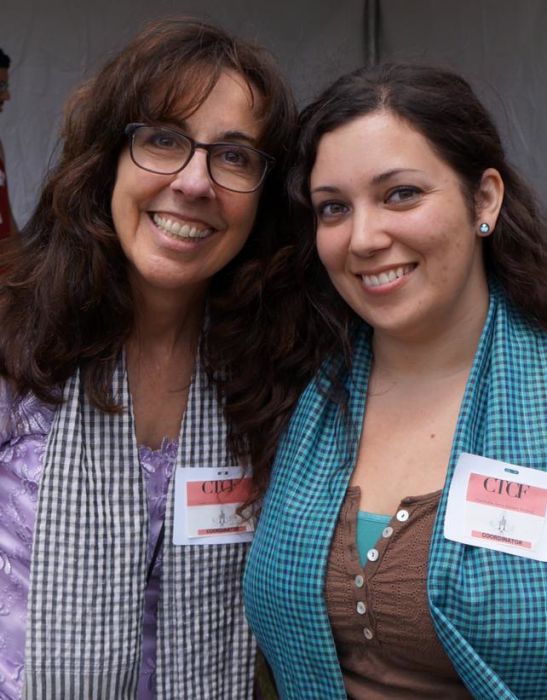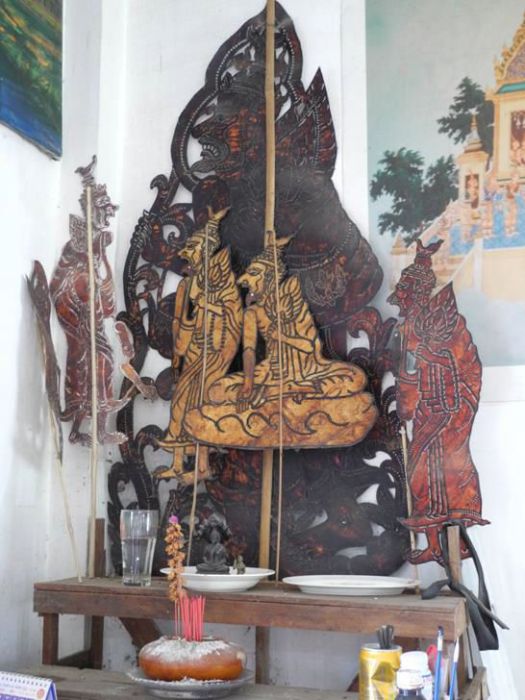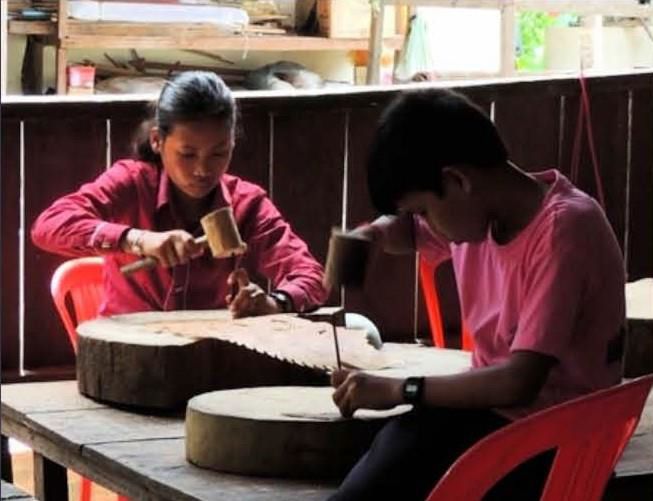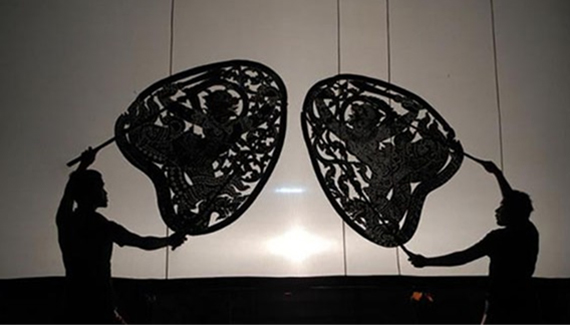Despite its name, shadow puppetry glows from a spiritually whimsical manipulation of light; although there was a time when an unfathomable darkness nearly wiped the little-known art form out of existence.
From 1976 to 1979, nearly 90 percent of the artists in Cambodia, where shadow puppetry was created in the early ninth century, were killed along with roughly 2 million others during the Cambodian Genocide carried out by the regime of the Khmer Rouge.
Thirty-five years later, most Americans still know very little about Cambodia’s culture, let alone shadow puppetry which even in Cambodia is relatively obscure and today, for the most part, only enjoyed by the affluent.

Professor Susan Needham, chair of the Department of Anthropology at California State University, Dominguez Hills (CSUDH), who began studying Cambodian culture in 1988 as an undergraduate, is doing her part to preserve and shine more light on the ancient art form of shadow puppetry (called “Sbaek Thom” in Cambodia). This is difficult because, before 1975, nearly all artistic knowledge in Cambodia was transmitted verbally and there are no records of Sbaek Thom available before that time.
“A whole generation was wiped out. Adding to that horrific reality, it was particularly devastating to a culture in which all artistic knowledge–material preparation, instrumentation, vocals, storylines, and dance moves–were passed exclusively through the master/apprentice relationship,” said Needham. “Unfortunately, with so few knowledgeable survivors, the future of the art form is still not assured.”
Out of the Shadows
Since 1979, Sbaek Thom has undergone a small revival thanks to a few surviving artists, some of whom are part of the Cambodian Living Arts program in Wat Bo, Cambodia. Collections of puppets throughout Cambodia that were destroyed are gradually being remade. In 2005, Sbaek Thom was proclaimed a Masterpiece of the Oral and Intangible Heritage of Humanity by the United Nations Educational, Scientific and Cultural Organization (UNESCO).
Sbaek Thom is a genre of Cambodian oral musical theater featuring two- to five-foot high, non-articulated shadow puppets. Dating from before the Angkorian period, the Sbeak Thom, along with the royal ballet and mask theater, is considered a sacred art form.
Originally, performances were dedicated to divinities and only took place on special occasions, such as the Cambodian New Year, the King’s birthday or the veneration of famous people. In the last century, the shadow theater evolved beyond a ceremonial activity to become an artistic form, while retaining its spiritual dimension.
“In Cambodia, artists were seen as vessels for the spirits, and part of the reason for the shadow puppets was to bring the spirits and blessings to the physical world,” said Needham. “This art form is highly sacred and is only performed a few times a year. So even a lot of Cambodians don’t know about it.”

Shadow theater performances feature a large white backdrop that is held in front of a large coconut shell fire. Theaters are found throughout Southeast Asia; however, the Cambodian tradition is unique in that the puppeteers are visible to the audience as they dance with the puppets in front of and behind the screen. Performances are accompanied by two narrators and a Pinpeat orchestra with nine musicians. Most of the stories and characters come from the Reamker, the Cambodian version of India’s epic poem Ramayana, and require up to 160 puppets for a single performance.
Return to Cambodia
Needham has been to Cambodia eight times over the years, and most recently in the summers of 2013 and 2014, she traveled with CSUDH alumna Alexxandra Salazar (Class of 2013, B.A., anthropology) to do research on shadow puppetry. Their travel and research was made possible through CSUDH’s College of Natural and Behavioral Sciences’ Faculty Mini Grant Awards, which were funded by grants provided by the Kenneth T. and Eileen L. Norris Foundation to enhance research activity in the college. They also received a grant from the CSUDH Emeritus Faculty Association’s Faculty Legacy Fund.
Needham and Salazar conducted much of their research on the Cambodian Shadow Puppet Theater in Siem Reap, Cambodia, to learn more about puppet production, how the craft is practiced, and to document a unique ceremony.
“We met with and interviewed three puppet makers in Cambodia,” she said. “We also video recorded a performance that included a Sompeah Kruu ceremony. This was exciting. The ceremony recording is very rare and extremely valuable.”
While in Cambodia in 2013, Needham also purchased shadow puppet books and materials to donate to the Cambodian Community History and Archive Project at the Historical Society of Long Beach, a collection of artifacts she established in 2008. Long Beach and surrounding areas are home to the largest Cambodian community outside Southeast Asia. The archive has more than 3,000 documents, 2,000 digitized photographs, unpublished manuscripts, and reports from researchers, community members, and Cambodian-led organizations in Long Beach that serve the Cambodian community.

Another reason for meeting with the puppet makers in Cambodia was to commission the construction of 18 puppets to bring back with her and eventually form a shadow puppetry troupe in Long Beach.
Shadow puppets are made from a single piece of cow hide elaborately cut out to form characters. The hide is first dyed with a solution made from the bark of the Kandaol tree, and then an artist draws a figure on the hide, chisels it out and paints it before attaching it to two bamboo sticks, which enable the dancer to control the puppet. The puppets are finished in a single day and a specific ceremony takes place during the creation of each, according to UNESCO.
To purchase the new puppets for their Sbaek Thom troupe, which are very expensive according to Needham, she received a grant from the Alliance for California Traditional Arts.
“We went and talked to a master and told him why we wanted the puppets. He was so happy that we wanted to perform for people and share the art form,” said Needham. “Fortunately, the master was there before the Khmer Rouge. He gave us the puppet guardian of the art form, called Preah Eisey, from his personal private altar. That was a great honor for us.”
